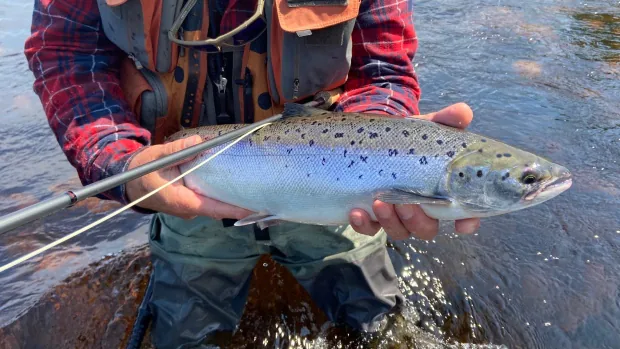Welcome to the latest installment of the Wednesday Wake-Up Call, a roundup of the most pressing conservation issues important to anglers. Working with our friends at Trout Unlimited, Backcountry Hunters & Anglers, the Theodore Roosevelt Conservation Partnership, The Everglades Foundation, Captains for Clean Water, VoteWater.org, and Conservation Hawks (among others), we’ll make sure you’ve got the information you need to understand the issues and form solid opinions.
Above is a new film that details the tremendous partnerships and work occurring across the Colorado River Basin to foster natural climate-change resiliency and water storage across both public and private lands. Through the eyes of volunteer pilot, Chuck Schroll, we take to the skies to drop in on projects occurring across the Southwest to protecting and restore riparian areas, help with water storage and aquifer recharge, and provide important wildlife and fish habitat.
1. The Great Salt Lake Could be the Next Environmental Disaster
Salt Lake City is a hub of the fly-fishing world, serving anglers who want fish some of the legendary nearby rivers or famous waters in western Colorado, Wyoming, and southern Idaho. But the city’s namesake, Great Salt Lake, has been in decline–owing to climate change, drought, and over-use of water resources–and is now one-third the size it was in the 1980s. A new scientific report warns that, without dramatic and immediate cuts in water consumption, the lake could vanish in just five years. The effect on the local environment and regions to the east could be dire.
Click here to read more on businessinsider.com
2. Experts Predict Big Algal Blooms on Lake Okeechobee and Caloosahatchee River
Photo by Planet Labs, Inc., used via Creative Commons Attribution-Share Alike 4.0 International
Last week, we posted about the excitement generated by the groundbreaking for the Everglades Agricultural Area Reservoir, which will increase the amount of clean, fresh water flowing southward through the Everglades. The reservoir will allow water managers to clean water that would otherwise be sent down the Caloosahatchee and St. Lucie Rivers, introducing toxic algae to those ecosystems. Unfortunately, this could be a particularly bad year for the algae blooms at the heart of the problem:
“What you have is a perfect storm of possibility for blue-green algae blooms that are going to feed off those nutrients,” said Gil Smart, the director of VoteWater, a nonprofit working to stop algae-laden discharges from Lake Okeechobee. “We’ve seen both federal and state water managers sound the alarm about the potential for this.”
Click here to read more on wgcu.org
Related Stories:
3. Aquatic Species & Habitat Impacted by East Palestine Train Derailment
When the horrific train derailment and chemical spill occurred in East Palestine, Ohio, last week, many wondered what the impact on the local environment would be. Writing in Outdoor Life, Katie Hill describes a widespread fish kill, as well as effects on other aquatic life:
Researchers took the sample from four collection sites on a 5-mile stretch of Bull Creek. Of those nearly 3,000 species, 2,200 of them were minnows under three inches long. Using an industry-standard calculation to estimate the death tally in that stretch, ODNR announced that 38,222 minnows and 5,500 other aquatic critters died in the wake of the train derailment.
Only time will tell if there are any lasting impacts on these waterways.
Click here to read more in Outdoor Life
Credit: Source link































